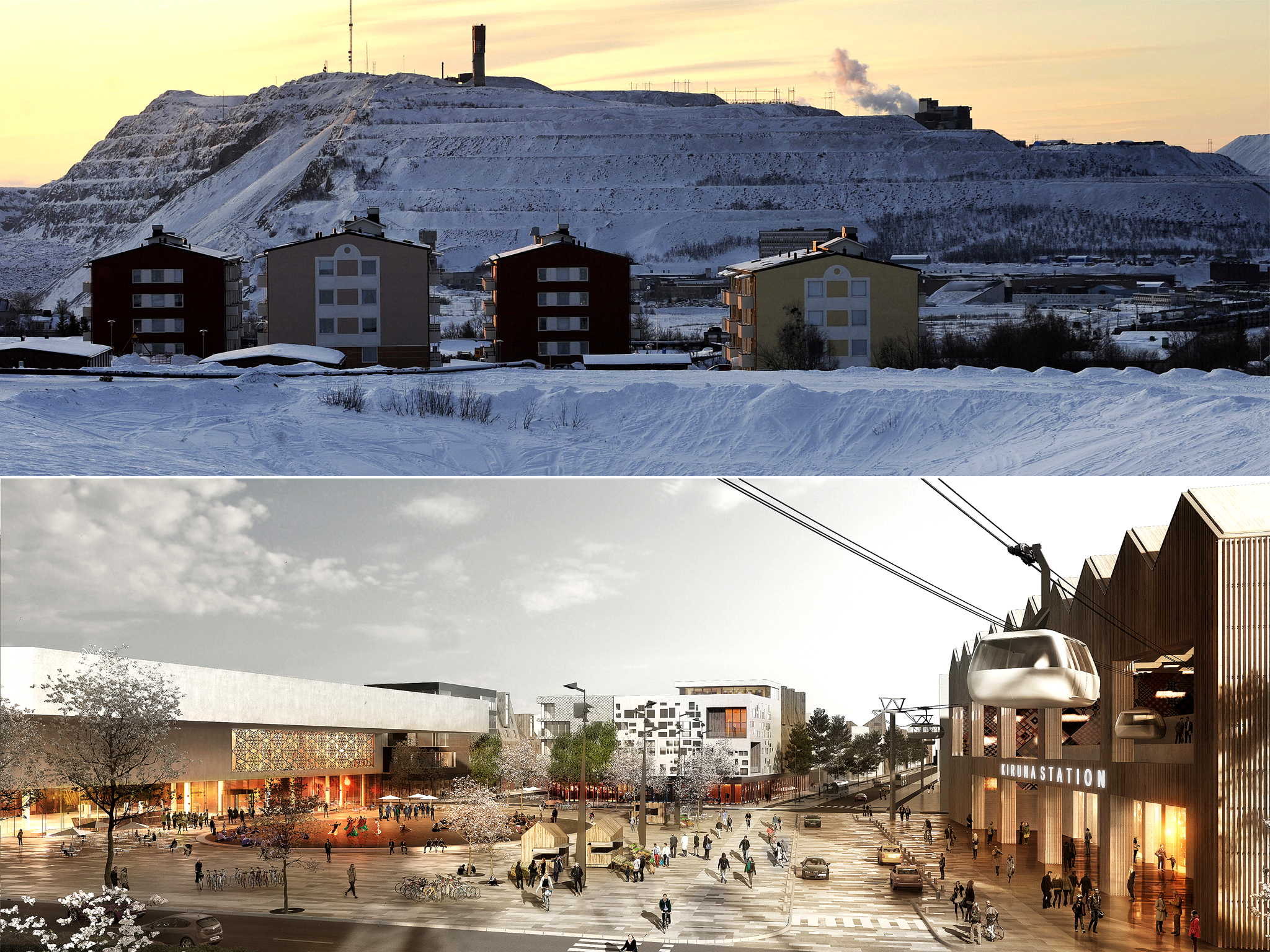And you thought moving house was stressful: Huge iron ore mines underneath Kiruna in Sweden’s far north have caused cracks - now officials are relocating the whole city
Some buildings will be totally demolished while others are being dismantled and reassembled

Your support helps us to tell the story
From reproductive rights to climate change to Big Tech, The Independent is on the ground when the story is developing. Whether it's investigating the financials of Elon Musk's pro-Trump PAC or producing our latest documentary, 'The A Word', which shines a light on the American women fighting for reproductive rights, we know how important it is to parse out the facts from the messaging.
At such a critical moment in US history, we need reporters on the ground. Your donation allows us to keep sending journalists to speak to both sides of the story.
The Independent is trusted by Americans across the entire political spectrum. And unlike many other quality news outlets, we choose not to lock Americans out of our reporting and analysis with paywalls. We believe quality journalism should be available to everyone, paid for by those who can afford it.
Your support makes all the difference.Everyone knows how stressful moving house can be, but officials in Kiruna in Sweden’s far north are faced with an even greater challenge: moving an entire city.
For more than 100 years, one of the world’s largest iron ore mines has provided the city inside the Arctic Circle with jobs and wealth. But as mining operations have expanded, cracks have started appearing in the city centre, threatening the foundations of the buildings at Kiruna’s core.
So in 2004, the decision was made to uproot the city centre – complete with church, town hall, schools, shops and the station – and shift it two miles to the east, along with many of the city’s 18,000 residents.
And after years of planning, the massive urban adventure is finally getting under way. In March the municipality selected a city centre design by the Swedish architectural firm White.
Results of a competition to design a new city hall will be announced later this month.
And on 31 August, Kiruna residents gathered on the platform of the station to watch the final train roll out.
“It feels a bit nostalgic and a little sad,” one resident, Mia Mörtlund, told Sveriges Radio, reflecting the views of many residents who feel more sentimental about the old city than angry at the prospect of relocating to a new one.
“For most people in Kiruna the fact that the town and its inhabitants will have to move is accepted as part of life,” Mikael Stenqvist, an architect at White, told The Independent.
The problem so far, he said, was that residents had been in a state of limbo as authorities debated exactly where the new city should be and what it would look like. But with the design finally approved, Mr Stenqvist said, “it’s time to stop talking and start acting.”
There are still grumbles, however, about the pace of work.
It’s a massive undertaking: some old buildings are being demolished; others are being dismantled, packaged up, and reassembled two miles away. Some structures, like the train station, will be replaced with temporary facilities.
Officials estimate that the move will progress over the next two decades – but the deformations caused by mining operations going deeper into the nearby mountain have already started appearing.
“We should have started the process in 2009 or 2010,” Peter Johansson of the construction company NCC told the Wall Street Journal. “The only thing that cannot be stopped is the fracturing, and it makes me worried thinking about how we will be able to make this in time.”
The Wall Street Journal reported that 3,000 apartments and houses are being relocated, along with 2.2million square foot of offices and government buildings. The state-owned mining company LKAB is covering most of the costs, with 3.5bn Swedish krona paid so far and another 7.5bn krona put aside.
Computer-generated projections of the new city centre show a thoroughly modern central square complete with cable cars, minimalist, boxy buildings, and large pedestrianised areas.
Not all the old structures will be replaced by gleaming new buildings. Kiruna’s old church, which in 2001 was voted the most beautiful building in Sweden, will be hoisted onto a lorry and transported in one piece, its arrival marking the final stage of Kiruna’s decades-long reinvention.
Join our commenting forum
Join thought-provoking conversations, follow other Independent readers and see their replies
Comments